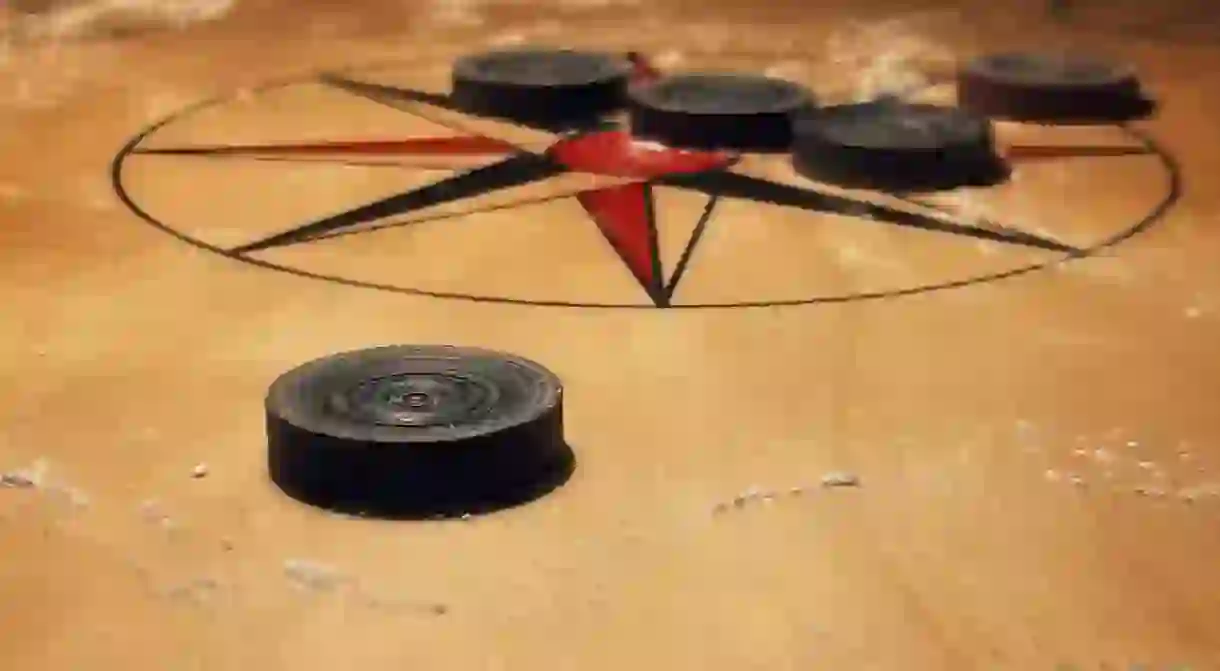Popular Games that Originated in Ancient India

Since ancient times, games have been played in India for recreation and mental and physical fitness. From indoor games to outdoor sports, some are now played internationally. Here is the history behind some of these games.
Did you know – Culture Trip now does bookable, small-group trips? Pick from authentic, immersive Epic Trips, compact and action-packed Mini Trips and sparkling, expansive Sailing Trips.
Chess
Chess was devised in India, and was known as Ashtapada (which means 64 squares). Unlike how the game is played today, it used to be played with a dice on a checkered board, but without black and white squares. A few years later, the game was called Chaturanga (quadripartite). It was divided into four parts called angas, which were symbolic of the four branches of an army. Just like the real ancient Indian army, it had pieces called elephants, chariots, horses and soldiers, and was played to devise war strategies. In 600 CE, Persians learned this game and named it Shatranj. ‘Checkmate’ comes from the Persian term in thegame, ‘Shah-Mat’, meaning ‘the king is dead’.
Carrom
A strike-and-pocket table game that is popularly played throughout South Asia and in a few Middle-Eastern countries, carrom is said to have originated in the Indian subcontinent. Though there isn’t any particular proof, it is said that Indian Maharajas invented the game centuries ago. You can find an ancient glass carrom board in Patiala, Punjab. Carrom gained popularity after World War I, and is now played at family or social gatherings for fun.
Ludo

Ludo is a board game that we’ve all played at least once. Earlier in India it was called Pachisi, and the board was made out of cloth or jute. A depiction of Pachisi is found in the caves of Ajanta in Maharashtra, showing that the game was quite popular in the Medieval Era. The Mughal Emperors of India, such as Akbar, also liked playing Pachisi. In the late 19th century, different variations of the same game were played in England; in 1896, a similar game appeared that was called Ludo, and thus the name was patented.
Snakes & Ladders
In ancient India, Snakes & Ladders was called Moksha Patam, Mokshapat and Parama Padam. Created by Sant (saint) Gyandev in the 13th century, this game of vice and virtues was used in Hindu Dharma to teach good values to children. The snakes represented vice and the ladders virtues. The squares where the ladders were found depicted virtues; for example, square 12 was faith, 51 was reliability, 76 was knowledge, and so on. Similarly, the squares where the snakes were found were known as vices; square 41 was disobedience, 49 was vulgarity, 84 was anger, et cetera. The hundredth square represented Moksha or Nirvana.
With time, the game underwent a number of changes, but the meaning remained the same: if you do good deeds, you go to heaven, and if you do bad deeds, you will be reborn.
Dice

If certain accounts are to be believed, oblong dice were found in excavations at Harrapan sites like Lothal, Alamgirpur, Kalibangan, Desalpur and Ropar. These dice were earlier used for gambling. Dice then spread to Persia and became a part of popular board games there. Early mentions of dice are also found in the Rig Veda and Atharva Veda.
Cards

Modern playing cards originated in ancient India, and were called Krida-Patram. They were made of cloth pieces, and showcased ancient designs from the Ramayana and Mahabharata. In medieval India, they were called Ganifa cards and were played in the royal courts of Rajputana, Kashmir (then Kashyapa Meru), Odisha (then Utkal), the Deccan area as well as Nepal. These cards were all handmade and traditionally painted. To provide the cards with sufficient thickness, several cloth pieces were glued together. Later, cards were played by all levels of society, made from tortoise shell or ivory and decorated with pearls and precious metals.
Polo

Though ancient polo finds its origin in Central Asia, it was Manipur in India that set the foundation for modern polo. When Babur founded the Mughal empire in the 15th century, he made the sport quite famous. Later, when the British came to India, they adopted the sport, and it gradually spread across the world. Mostly the game is played on horseback, but the British invented another variation–on elephant back. Elephant polo is today popular in the Indian state of Rajasthan, and countries like Sri Lanka, Nepal, and Thailand.
Kho-Kho

Kho-kho, or the ‘game of chase’, was earlier played in Maharashtra. It is one of the most popular traditional Indian sports. During ancient times, it was played on raths (chariots), and was called Rathera. When Akhil Maharashtra Shareerika Shikshan Mandal published the rules of the game officially in 1935, kho-kho became popular. Under the Kho-Kho Federation of India, the first kho-kho championship was organized in 1959. In 1982, it was included in the Indian Olympic Association.
Bull fighting

The bull taming sport of Tamil Nadu is known by various names in India, such as Jallikattu, Manju Virattu and Eruthazhuvathal. It is mostly played during Pongal celebrations. Bulls are specifically bred for this sport. Earlier, bull fighting was a popular sport of Tamil Nadu’s ancient tribes. It became a platform to showcase bravery, a form of entertainment and a way to win some prize money.
Kabaddi

Kabaddi is a contact sport that is around 4,000 years old. It is another sport that started in Tamil Nadu, and developed from ancient village defense tactics and group hunting. Kabaddi is an umbrella term and has many other forms under it–Sanjeevani, Amar, Punjabi and Gaminee–as well as some international rules. Combining characteristics of rugby and wrestling, kabaddi requires great power and skill. The game goes for 40 minutes and has seven players on each side.













